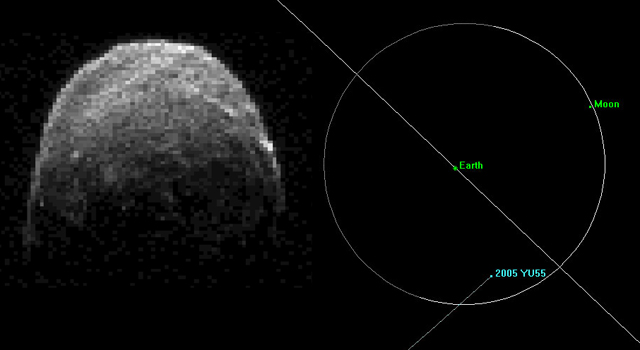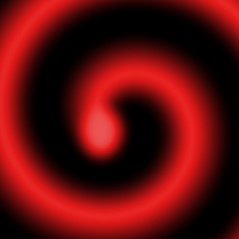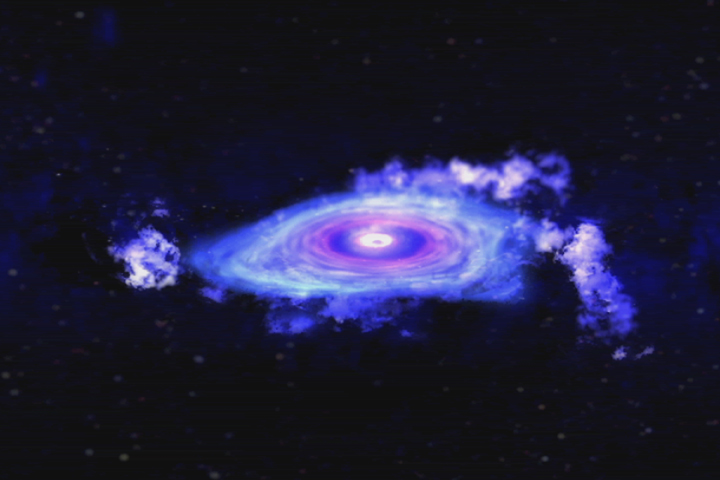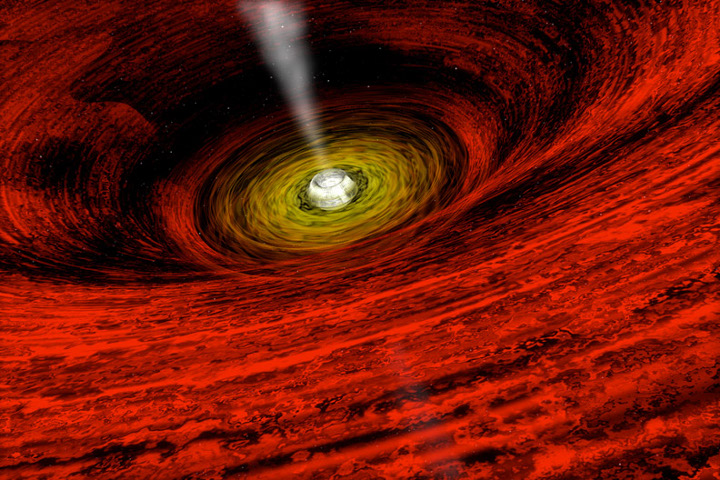|
|
  |
 |
|
|
|
Copyright © 2009, 2010, 2011 Updated April 24, 2018. See document history at end for details. Norwegian SpiralPossible
Near
Encounter
with
an
Astronomical Singularity
First ImpressionsOn Wednesday, December 9, 2009, Norwegians witnessed a marvel in the morning sky. Officially, some were calling it a failed Russian missile test, which Russia denies. Others speculations range from a UFO, a new astronomical discovery, to even a black hole. Until I inquired furthur, it only appeared an oddity when saw it briefly on the evening news. The marvel began as tight spinning spiral which faded as it came close enough to appear as a dark sphere with white border. A blue energy plume emerged from its axis of rotation, seemingly bent away from the sun by the solar wind in the manner of a comet's tail, during the entire two minutes it was seen.To anyone familiar with astrophysics, this phenomenon had all the appearance expected of an astronomical singularity of some type. The accretion disk and the on-axis energy plume are readily familiar. If this is not a hoax, a near encounter with a stray neutron star, black hole or other singularity represents the scariest astronomical encounter we have ever had. The comets that struck Jupiter in 1994 pale in comparison for the moment. The expectation that such objects are estimated to be much heavier than the sun may mean that the object could have been much farther away than the apparent size of its event horizon would lead us to believe. If no damage is done, it may be the most exciting event that physicists have ever had an opportunity to witness. It was a grand opportunity to witness something we usually only think of as being very far away. I would not be too hasty to take this as an omen. You should consider that if it can happen at all, it has always been possible. Interpretation of prophecy still has to closely follow the Bible. Besides, in this day of easy deception, it may be better to reserve judgment until more can be discovered. Particulary suspect is the limited geographical area from which such a huge phenomenon was viewed. Perhaps too, an event of this apparent magnitude might become a matter of secrecy for fear of public panic. Let's watch and see how the spin comes out. For now, I refer you to a British web newspaper for the pictures.1 Postscript
NASA VideosNASA SOHO videos show a ring-shaped object come around the
sun. If this is the Norway spiral, they saw signs of it five days
in advance of its appearance to earth. Claims of human origin
would lose credibility as well. Click thumbnail or link below to
look for yourself.
To see the data for yourself, click the following link then data/archive followed by mpegs. Solar and Heliospheric Observatory Homepage Possible Aftereffects (or "Did
It
Throw
Rocks?")
On January 13, 2010, an asteroid passed by earth at a distance of about
80,000 miles. This 30-50 foot rock passed about 1/3 the distance
to the moon. Other information that I could find stated that
impacts were expected to produce craters 15 times the diameter of the
projectile. This is in the range of the 600 foot craters that the
first A-bombs made. Astronomical impacts contain energy
disproportional to their size because of their enormous velocity
relative to the earth. Consider that energy increases with the
square of the velocity in the kinetic energy equation e = ½mv2.
The
superpowers
likely
hold
hands whenever there is a possibility of
unexpected meteor showers because inbound ICBMs resemble meteors in
appearance. Add an A-bomb-like explosion also. (Although, without
the same brilliant flash of light.) You could imagine how raw
nerves would be. One event is far from statistical
significance. Still, it would be well if you prayed that nuclear
powers would keep their heads in the face of such phenomonen. |
| NASA picture of Asteroid 2005 YU55 November 7, 2011 2:45 p.m. EST as it approached Earth and its trajectory diagram (Credit: NASA/JPL-Caltech) |
 |
Out of curiosity, lets calculate an approximation of the kinetic energy of this projectile from its velocity relative to the earth.
To calculate the kinetic energy of the object the velocity must be converted to the metric MKS (meter-kilogram-second) units.
| velocitymks = |
29,000(mi/hr) × 5280(ft/mi)
× 12(in/ft) 3600(s/hr) × 39(in/m) |
= 13.0872km/s |
From the formula for the volume of an ellipsoid, the stated length of 400m and an a presumption of 200m for the other two dimensions,
| volume = |
4π × a × b × c 3 |
= |
4π × 400m × 200m × 200m 3 |
= 67.0206Mm3 |
Not knowing the material from which the asteriod is made, a presumption of 5g/cm3 (5000kg/m3) median density would be reasonable. Then the mass of the asteriod would be the product of the volume with the density:
| mass = 67.0206Mm3 × 5000kg/m3 = 3.35103e+011 kg |
Now the kinetic energy in Joules can be calculated:
| e = ½mv2 = ½(3.35103e+011 kg)(13.0872k(m/s))2 = 2.86974e+019J |
Now for a conversion to tons of TNT, a calculation usually related to Einstein's equation e = mc2. Because
| 1Ton (of TNT) = 4.184GJ |
| eTon = |
2.86974e+019J
4.184GJ/Ton |
= 6.85884GTon |
This incomprehensible amount of energy pales the largest hydrogen bomb test ever done, the 50MTon Tsar Bomb tested by the Soviets in October 1961. You can view that explosion on the internet to get some sort of perspective.
As of March 11, 2013, this monster still seems to be throwing rocks. Astonishing news came on February 15, 2013 that a meteor of several kilotons energy exploded near the Chelyabinsk region of west Russia. Over a thousand were injured by shrapnel created by the shock wave and the Russians later revised their estimate of the force of the blast to about 200kTon. This occurred entirely by surprise as the world watched the larger 2012/DA14 asteroid fly by. While still in amazement at this occurrance, news today is that four asteriods passed nearby in the past week. The largest, designated 2013 ET, was estimated to be 460 feet long.
More recently...
Without advanced notice - on April 15, 2018 - a dangerous asteroid passed the earrh about half the distance to the moon. Named Asteroid 2018 GE3, the 48 to 110 meter object whizzed by at 2:41 a.m. EDT at a distance of 119,400 miles. If an average size of 80 meters was calculated against its flyby speed of 26.5km/s (66,000 mph) I estimate it would have had 1.1GTon of explosive energy if had impacted. This is consistent with reports comparing it to the one that devastated the Tunguska region in Siberia on June 30, 1908.
| Unintended Support by Scientific Media |
Artistic recreation of Discovery Science
Channel video. |
| April 20, 2010. The
representation of the spin of the inner accretion disk of a black hole
on an astronomy show on the Discovery Science Channel3
surprised me. Aside from being a different color, it looked
exactly like some videos of the Norwegian Spiral that were
published. I have not heard any confirmation in the media
of a scientific belief that this event was a singularity, although I
may not have heard all that you have on this matter. The
resemblance of the two videos implies that astronomers may believe the
event is a singularity after all. If the scientific video
predates the Norwegian Spiral, the official story was
disingenuous. If it came after, they may have based their image
on an observation of which they were not allowed to speak.
Science is expensive. Be sure you know that, like so many other
things, it has to serve the benefactors who fund it. June 27, 2011. After a report in the evening news of a recent near asteroid miss, the Discovery Science Channel dropped another clue. Our solar system not only revolves around the Milky Way in an ordinary orbit but has an up and down motion as well they said.4 It immediately occurred to me that this "up and down motion" is a clear indication of an elongated elliptical orbit around an object much more massive than our sun, one that has not been seen with any brighness of a star that it should be already known to us. It would be astute to ask whether the observation of thus "up and down" aspect of our journey around the Milky Way has just been discovered. If not, astronomers have long suspected our elongated elliptical orbit around a black hole and could not tell us. It is more likely, however, that our recent turn around the focus of this orbit has allowed this observation, a surprise to us all. The narrator seemed to speak with greater concern for the possible imminence of astronomical danger than previous presentations of this sort. Previously too, I had observed scientific media speak of things that could support these conclusions. We are told that supernova and hypernova are required to create the heavier elements necessary for life as we know it. Astronomers would delight to find our solar system in a direct relationship with a black hole that would have been created along with our solar system by such an explosion. No doubt, they hold their joy with some measure of graveness, while wanting to tell you that our solar system accreted from the material created by this supernova. I argue here the scientific merits of this observation at the risk of appearing to rationalize the creation of all things by God. This is not my intent, but I realize that science will make observations incidental to the creation that someone will have to explain.5 |
 |
Compare these scientific illustrations of black holes to the published pictures of this singularity:
| Illustration from Chandra website. Credit
NASA/SAO/CXC/D.Berry |
 |
Illustration from Chandra website. Credit NASA/CXC/A.Hobart |
 |
|
|
1The
Sun,
December 9, 2009 - Spiral
UFO
Puts
Norway
in
a Spin, archive
2See article: The Politics of Global Warming.
Paragraph
preceding
note
altered
for scientific correctness August
31,
2011.
3Discovery Science Channel, April
20,
2010
10:00p.m. - Cheat
Sheet:
Mysteries of the Universe.
4I had an opportunity to view the
same program I viewd on the Science channel on July 27, 2011 again on
March 9, 2012. Here is the program listing from their website:
5See article A Compelling Argument against Darwinism
for my view on this matter.
Survival
TV-G, CC
Mankind has found a tentative foothold on Earth during a cosmic quiet
spell, but how long will it last? Find out what would happen if a black
hole, able to devour everything in it's path, sets a collision course
with planet Earth.
Document history:
December 10, 2009 Creation.
December 10, 2009 Added postscript.
December 11, 2009 Added illustrations.
December 11, 2009 Added to postscript.
December 15, 2009 Added astronomy info and NASA video.
December 17, 2009 Minor updates (Added Windows planetarium
program recommendation. Changed NASA image from embedded video to
a video link)
February 11, 2010 Added paragraph relating near asteroid
flyby as possible consequence.
March 6, 2010 Added paragraph relating polar shift and shortened
day attributed to Chilean earthquake as possible consequence.
April 23, 2010 Added paragraph regarding unintended support by
scientific media.
June 27, 2011 Added new material relating to unintended support
by scientific media.
August 31, 2011 Added diagram illustrating the type of long
elliptical orbit by which our solar system might revolve around a large
singularity. Made other alterations for scientific correctness.
November 8, 2011 Added today's asteriod flyby to section
"Possible aftereffects."
February 25, 2012 Added section on possible seismic effects.
March 9, 2012 Added footnote documenting details of Science
channel program cited under Unintended
Support
by
Scientific
Media.
March 11, 2013 Added recent asteriod flybys and
meteor strike of two months to section
"Possible aftereffects."
April 24, 2018 1.1GTon flyby of Asteroid 2018 GE3 on April 15,
2018 shows that the singularity is still throwing rocks.


